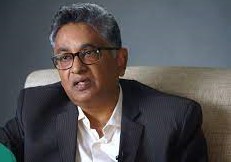The report provides global benchmarks on proven insurance practices, and discusses critical aspects like customer experiences, seamless claim settlements, and adoption of new technologies. The time is ripe for introducing changes in the insurance industry that will provide choice and option to the policyholder and lead to growth in the industry.”Roop Kumar, N.K.V Chairman, RIMS India Chapter
The Indian insurance market must align with leading global markets in freedom of pricing, coverage, limits and deductibles in insurance, according to the “International Best Practices to Increase Insurance Penetration and Risk Management Study,”
conducted by RIMS and National Insurance Academy (NIA).
Overall, these market reforms will enhance the financial soundness of insurers, incentivize risk mitigation and product diversification, improve insurance coverage, and bridge the insurance protection gap. Overall this would be win-win for both Insurer and policyholder.
Roop Kumar, N.K.V Chairman, RIMS India Chapter, said, “The insurance industry, as a facilitator and key contributor to economic growth, can play a crucial role in achieving the goal of ‘Insurance for all’ by 2047. The report provides global benchmarks on proven insurance practices, and discusses critical aspects like customer experiences, seamless claim settlements, and adoption of new technologies. The time is ripe for introducing changes in the insurance industry that will provide choice and option to the policyholder and lead to growth in the industry.”
Following are the findings basis the study and the recommendations to fuel the growth of the Indian Insurance market:
-According to the study, all countries are allowed to exercise freedom in pricing whereas pricing in some lines of business, like fire remains fixed in India due to conditions imposed in reinsurance treaties.
-9/10 countries believe that they have freedom in policy wordings. In India, the insurers do not have freedom in issuing customized policy wordings. The report further suggests that enabling insurers to customize the policy wordings in accordance with the risk profile would encourage product innovation and will meet the customer needs
-Freedom in deductibles and loss limits is permissible in 9/10 countries as the sum insured is higher. On the contrary in India, majority of commercial policyholders, where the sum insured is lower than $350 million at a single location cannot have loss limit-based policies or increase their deductibles. This would reduce their overall insurance cost.
-Flexibility in policy tenure is allowed in 8/10 countries globally as mentioned in the study. In the Indian scenario, access to short term insurance in non-life insurance policies is minimum for one year. -For motor insurance covers, longer term polices for up to 3/5 years are available.
-7/ 10 countries believe they can provide seamless claims experience to their customers. In India, there is strong need for simplification/ standardization of claims process, which would improve the claims settlement time and also bring transparency. Delays in complex / large claims needs to be addressed.
-40% countries surveyed said, they have the availability of end-to-end insurance solutions.In India, Insurance brokers are allowed to sell insurance products only while other financial intermediaries are allowed a wider gamut of products including insurance. There is a need for relaxation in norms by the authorities, pertaining to insurance brokers.
-8/10 countries officials state that Risk based Solvency exists for their insurance companies.Insurance companies in India needs to maintain a solvency ratio of 1.5 times Available Solvency Margin/ Required Solvency Margin.
The study was conducted with senior industry experts in 10 markets to analyse the best practices which help in the growth of insurance penetration from selected global insurance markets that can benefit Indian Insurance market – Australia, United Kingdom (UK), France, Singapore, United States of America (USA), China, Hong Kong, United Arab Emirates (UAE), Spain, Germany, and India.

